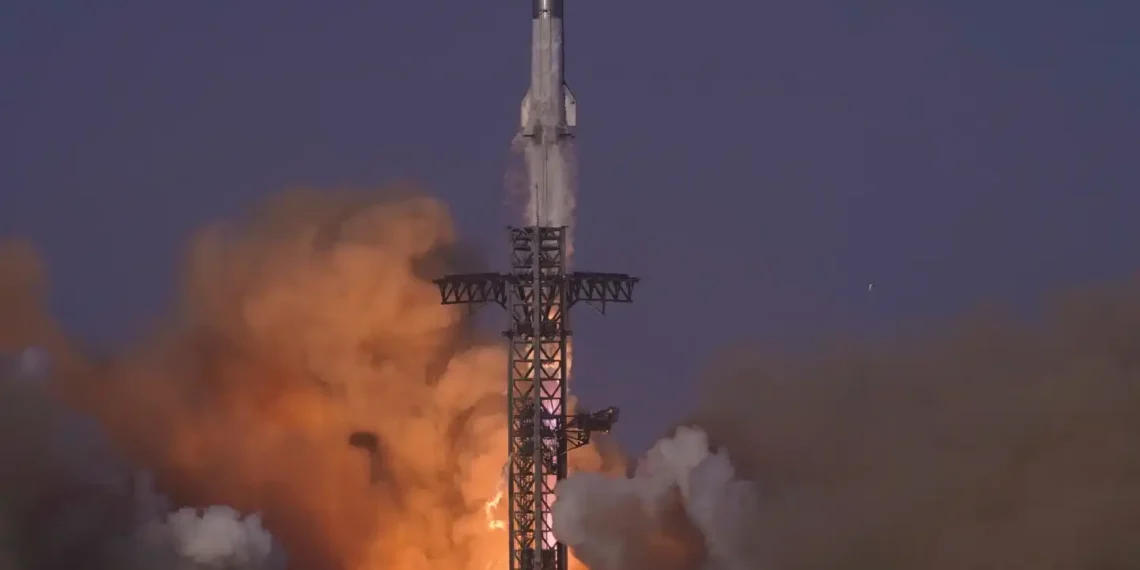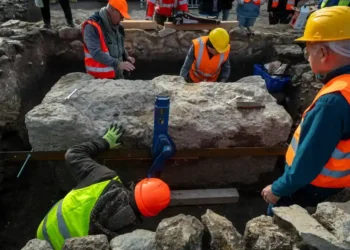SpaceX Launches Starship Again After Explosions — But Rocket Tumbling Ends Mission Early
SpaceX fired up its massive Starship rocket for the ninth time Tuesday evening, hoping to build on recent progress after two explosive demo flights. But despite a powerful launch, the mission fell short when the spacecraft tumbled out of control and broke apart before completing its main objectives.
The 403-foot (123-meter) Starship blasted off from SpaceX’s Starbase launch facility in southern Texas — a community that recently voted to officially become a city. The launch marked the first time SpaceX flew a Starship with a recycled booster, pushing the hardware to its limits.
What Went Wrong?
SpaceX aimed to release a series of mock satellites after liftoff, but the plan hit a snag when the spacecraft’s cargo door failed to open fully. Soon after, the rocket began spinning uncontrollably as it ascended, eventually heading toward an unplanned, uncontrolled splashdown in the Indian Ocean.
SpaceX confirmed the spacecraft suffered a “rapid unscheduled disassembly” — a polite way of saying it broke apart mid-flight. The company said it will analyze flight data and work toward improving the next test.
Elon Musk Sees Progress Amid Setbacks
SpaceX CEO Elon Musk acknowledged on X (formerly Twitter) that this flight was a “big improvement” over the previous two, which ended in fiery crashes over the Atlantic. He pledged to ramp up the testing pace, with Starship launches planned every three to four weeks for the next several flights.
Unlike previous attempts, SpaceX did not try to catch the booster upon return with its giant mechanical arms—sometimes called “chopsticks.” Instead, the booster was allowed to crash into the Gulf of Mexico in pieces after losing communication mid-flight. Meanwhile, the main Starship continued on its unstable trajectory.
Technical Challenges and What’s Next
Fuel leaks apparently caused the spacecraft’s loss of control. SpaceX flight commentator Dan Huot admitted, “Not looking great with a lot of our on-orbit objectives for today,” referring to the failure to test the spacecraft’s heat shield during a controlled reentry.
Communication with the rocket ended shortly before it crashed, and SpaceX ended its live webcast soon after.
Background and Bigger Picture
This launch follows two previous Starship demo flights earlier this year, both of which failed minutes after liftoff, sending wreckage raining down in the Caribbean. Thankfully, no injuries or serious damage were reported, though airline traffic was disrupted.
The Federal Aviation Administration recently gave SpaceX clearance for this flight, expanding the safety hazard zone and scheduling launches outside peak air traffic times.
In preparation for future missions, SpaceX modified the spacecraft’s thermal protection tiles and installed catch fittings designed to enable future recovery of Starships back on the launch pad—similar to how they recover boosters.
Why It Matters: NASA and the Moon Mission
Starship is the largest and most powerful rocket ever built, and NASA is counting on SpaceX to make significant progress in the next year. The goal? To use Starship for upcoming moon missions, including a 2026 flight carrying four astronauts that will orbit the moon (but not land).
Landing astronauts on the lunar surface won’t happen until at least 2027, and it will require Starship to safely transport crew from lunar orbit to the surface and back.
SpaceX’s Starship program continues to push boundaries with each test flight — even when the rocket doesn’t land as planned. With improvements in the pipeline and an aggressive launch schedule, the journey to Mars and beyond is still very much underway.
This article was rewritten by JournosNews.com based on verified reporting from trusted sources. The content has been independently reviewed, fact-checked, and edited for accuracy, neutrality, tone, and global readability in accordance with Google News and AdSense standards.
All opinions, quotes, or statements from contributors, experts, or sourced organizations do not necessarily reflect the views of JournosNews.com. JournosNews.com maintains full editorial independence from any external funders, sponsors, or organizations.
Stay informed with JournosNews.com — your trusted source for verified global reporting and in-depth analysis. Follow us on Google News, BlueSky, and X for real-time updates.














